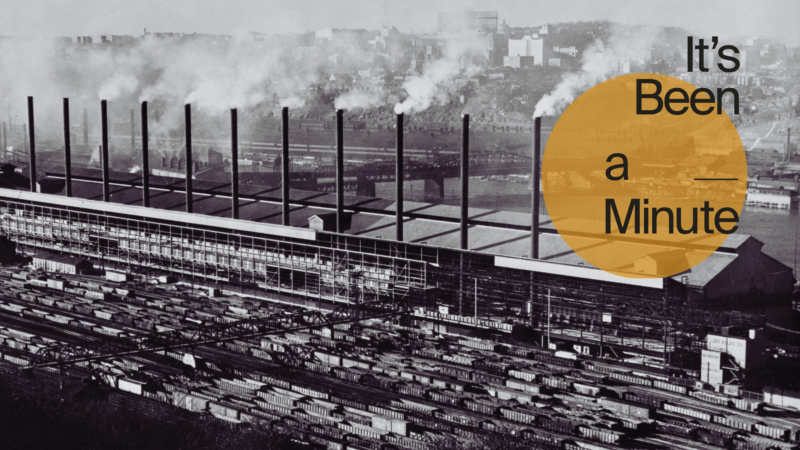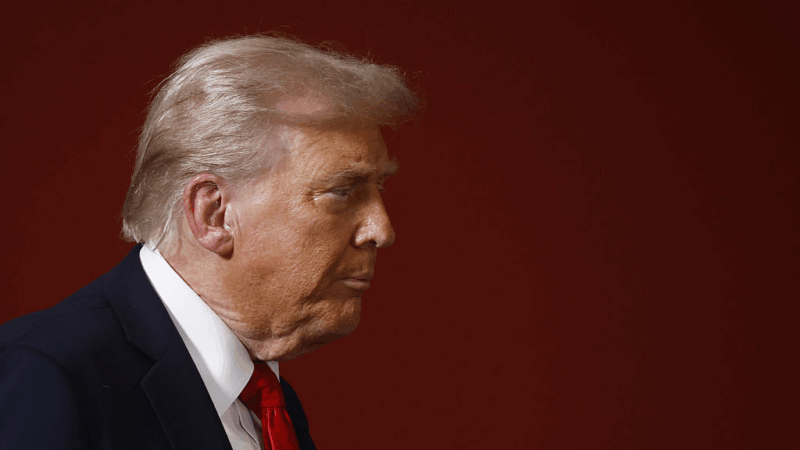Americans still dream about factory jobs. Can they be brought back?
“Jobs in factories will come roaring back into our country,” said President Trump when he announced reciprocal tariffs last month. “We will supercharge our domestic industrial base.”
The American manufacturing sector is not what it once was. Since its peak of 19.6 million workers in 1979, American manufacturing has lost over a third of its workers, now employing 12.7 million.
Many people aside from President Trump want these jobs back. Factory work has been a political focus on both sides of the aisle for years. And one poll from the Cato Institute and YouGov shows that 80% of Americans say the country would be better off if more Americans worked in manufacturing.
But why do Americans of all stripes want these jobs back so much – and why does factory work seem so culturally charged? And how does the dream of bringing more factory jobs back stack up against the reality of how American manufacturing works today?
We looked into some of these big cultural questions around factory jobs – and here are the four main takeaways.
Question 1: Why is there so much cultural nostalgia around factory jobs?
Jeffrey Gonzalez, associate professor of English at Montclair State University, wrote a paper about “smokestack nostalgia” in different pieces of art.
“The picture that we get with smokestack nostalgia is that these were good, solid jobs that people had for generations,” he says, “that forgets that it was union activity that secured those [wages]. And it was often [a] violent struggle, right?”
In fact, salaries for manufacturing jobs are now in the bottom half of all jobs. And one paper by researchers at the Federal Reserve shows that the decline in unionization rates is, by and large, responsible for the drop in wages for factory work compared to other jobs.
“[And] the northern factories where that union work happened, they were undercut by laws in the south that made manufacturing move south, where [it was] so much harder to create a union,” adds Gonzalez.
Vox senior correspondent Dylan Matthews adds that some of the cultural nostalgia for factory work might stem from guilt some people might have about their “email jobs,” as opposed to making something physical for work.
“I think I very much have an email job now,” he says. “What am I doing? I’m trying to create page views, so that we can sell money to advertisers, so they can sell cars. The whole economic process I am a part of is so baroque and so apart from what it is I’m actually doing day to day that you lose that kind of connection. And I think that’s an important emotional thing for some people.”
Question 2: What’s the political appeal of bringing more factory jobs back?
While there may be other incentives for more American manufacturing jobs, Matthews also thinks narratives about factory work align with conservative views around traditional families.
“Some of the conservative mythologies [about factory work include] the idea of a ‘family wage,’ that you can make enough money in a factory to pay for the full family, which implicitly means the wife does not have to work,” says Matthews.
Republican politicians including Vice President J.D. Vance have also made national security arguments for opening more factories in the U.S. that could produce weapons.
“We’ve been giving a lot of artillery shells to Ukraine in their battle with Russia, and we’ve run through a lot of existing stockpiles,” says Matthews. “And I think the other thing is [that] a surprising amount of the Ukraine war has been both sides using drones to do reconnaissance on each other and try to anticipate attacks. And those drones are [largely] made in China.”
For some conservatives – that’s a big problem.
“There are people in DC who are very convinced that China is a deep adversary, and if this is an important military technology that they make [a lot] of, I think within that worldview, it makes sense to be a little worried about this,” says Matthews. “Now, whether you think China is the big adversary and we should be preparing for war against them, that’s a bigger question.”
However, the issue of bringing back more manufacturing jobs cuts across political lines. Bernie Sanders has recently called for rebuilding American manufacturing. Revitalizing American manufacturing was also a priority of former Presidents Biden and Obama. And Matthews believes there is a particular political nostalgia around factory work for people on the left.
“If you look back at the ’50’s and ’60’s, the heyday of American manufacturing was also the heyday of American unions,” Matthews said. “The [United Auto Workers Union] was incredibly powerful, and that in turn supported a Democratic Party where labor was an incredibly important part of the coalition. Spending programs like Medicare [might] not have passed without strong union support.”
Question 3: Does the desire to bring jobs back match up with the reality of American manufacturing today?
Many manufacturing jobs in the U.S. are already available. In fact, there are 400,000 open positions in manufacturing as of February, according to the National Association of Manufacturers. Some factory owners are having trouble filling these existing positions.
“A manufacturing job looks very different from what it did in the fifties,” says Matthews. “If part of the appeal of manufacturing was that it provided decent wage jobs for people straight out of high school, that is not the way a lot of these factories operate these days.”
But can we add more jobs in the sector? Matthews says there’s reason to think that could be tough.
While there’s been disagreement about the main cause of factory job losses, one new paper by Robert Z. Lawrence, Harvard’s Albert L. Williams Professor of International Trade and Investment, suggests that productivity growth beats out foreign competition for the most blame.
So even if we add more factories – we might not be adding that many jobs along with them.
“There’s just been a lot of money invested in making humans less essential to the production process,” he adds. “It’s incredibly automated.”
But Matthews argues that there’s nothing special about manufacturing work that made it a “good job,” and that other work should also have that “good job” status.
“I would love for politicians to stand up and say Amazon warehouse workers need to make more money. I want to make that a job that is good the same way that working at a GM line was a good job,” he says. “We can make the jobs good if we want them to be good.”
Question 4: What might be the impact of President Trump’s policies on bringing factory jobs back?
The last time President Trump issued import tariffs, they did not increase or decrease employment in protected sectors, according to one analysis in the National Bureau of Economic Research.
“I think the best analogy I’ve heard for using tariffs to try to get manufacturing jobs back is: if you run someone over with your car, and then to fix the situation, you back over them again,” Matthews says. “It just doesn’t follow that if the U.S. changing its trade policy one way led to this exit of jobs, reversing [it] will bring them back.”
There are also potential effects from President Trump’s immigration policies. As of 2023, there are 3.2 million foreign-born workers in manufacturing, about 25% of all manufacturing workers. His large-scale deportation efforts may add to the number of open jobs in the sector.
Liam McBain contributed reporting, Neena Pathak and Luis Clemens edited the text.
What are your unique holiday traditions? NPR wants to know
The holiday season is full of traditions and we all celebrate them a bit differently. NPR wants to your most unique holiday traditions. What makes celebrating this time of year feel special for you?
What are your unique holiday traditions? NPR wants to know
The holiday season is full of traditions and we all celebrate them a bit differently. NPR wants to your most unique holiday traditions. What makes celebrating this time of year feel special for you?
3 culinary tricks that might get you to eat more veggies, according to chef Roy Choi
Chef Roy Choi, known for his Korean-Mexican fusion food trucks, focuses on veggie-forward dishes in a new cookbook. He shares techniques to get you excited about your greens, plus 3 flavorful sauces.
3 culinary tricks that might get you to eat more veggies, according to chef Roy Choi
Chef Roy Choi, known for his Korean-Mexican fusion food trucks, focuses on veggie-forward dishes in a new cookbook. He shares techniques to get you excited about your greens, plus 3 flavorful sauces.
Trade tensions hang over Trump’s Asia trip, but he still aims to make a deal
President Trump plans to attend a summit in Malaysia before meeting the new Japanese prime minister in Tokyo and talking to Chinese President Xi Jinping in Korea.
Blue Jays rout Dodgers 11-4 in World Series opener
Addison Barger launched the first pinch-hit grand slam in World Series history, as the Toronto Blue Jays overwhelmed the defending champion Los Angeles Dodgers in the opener Friday night in Toronto.









